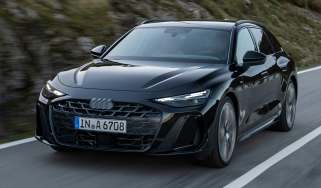Kia Ceed Sportswagon estate - Engines, drive & performance
The Kia Ceed Sportswagon has sharpened up, but at the expense of some comfort
While most people won’t buy a small estate because it is fun to drive, it doesn’t mean it is not possible. The Ford Focus Estate proves this. It handles the corners with pizzazz, being even better in this regard than the SEAT Leon ST. By contrast, the Kia is competent and easy to drive without ever being much fun.
Its 1.5-litre petrol manages 0-62mph in under 10 seconds, and although other engines that were previously available were a bit quicker, it is fast enough. It’s also worth noting that ‘3’ versions fitted with 17-inch wheels have a firmer ride than ‘2’ models fitted with 16-inch alloys. We’d recommend testing the car at the dealer before signing on the dotted line, to see which is the best fit for your preferences.
Petrol engines
With 118bhp, the now-discontinued 1.0-litre T-GDI engine was our pick of the bunch if you could live without the extra performance of the 1.5-litre T-GDI. It takes the lengthiest 11 seconds to reach 62mph from stationary, but it's smoother than most rival 1.0-litre engines and works well in town. If you plan on regularly filling every seat and the boot, the larger petrol is probably a better bet, with an extra 40bhp reducing the 0-62mph benchmark to around nine seconds. This is also the only Sportswagon available with Kia's optional 'DCT' seven-speed dual-clutch automatic gearbox, rather than the standard six-speed manual.
Plug-in hybrid engines
If you want to reduce your bills further, the plug-in hybrid model officially offers the best efficiency in the Ceed Sportswagon lineup. It isn't available for the facelifted car yet but if it makes an arrival we expect it to retain similar specifications to before. It combined a 1.6-litre petrol engine, an electric motor and an 8.9kWh battery, giving it 139bhp. Power goes to the front wheels via a six-speed automatic gearbox.
More reviews
The powertrain is shared with the Kia Niro and XCeed PHEV models, and performs similarly well in the Sportwagon’s larger estate body, managing 0-62mph in 10.5 seconds with a top speed of 105mph.
Compared to the petrol and diesel models, the PHEV model isn’t quite as good to drive, however. The battery has been hidden beneath the boot floor, which impacts practicality and adds more weight over the rear wheels. The steering is tactile and precise, with sure-footed handling but it’s let slightly down by additional body lean in the corners when compared to the standard car.
Once the battery is depleted, the start-up of the petrol engine is slightly harsh, and easily noticeable from the driver's seat. The dual-clutch automatic gearbox is not as smooth as the one used in the Renault Megane PHEV, with quite abrupt gearchanges. Despite this, the Ceed Sportswagon is comfortable at higher speeds, with a refined ride quality that’s only occasionally upset by larger road imperfections.
Kia Ceed Sportswagon diesel engine
Although it’s now discontinued, the Ceed Sportswagon's sole diesel was a 1.6-litre four-cylinder with 134bhp, designed to be quieter and cleaner than most. Fitted with this engine it takes a respectable 10 seconds to get from 0-62mph, with a top speed of 124mph. It's a close match for equivalent diesel engines in the SEAT Leon ST and Volkswagen Golf Estate.












